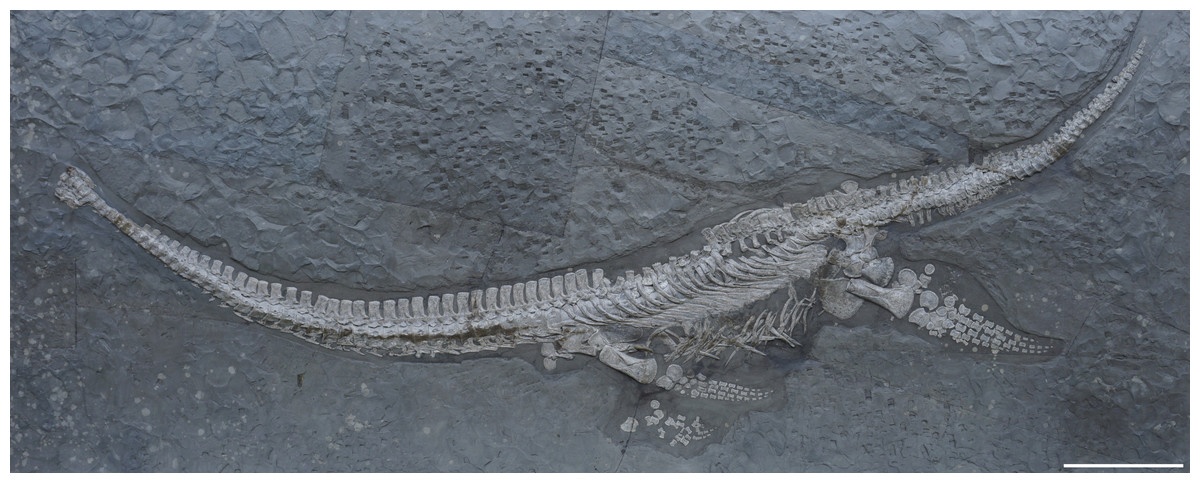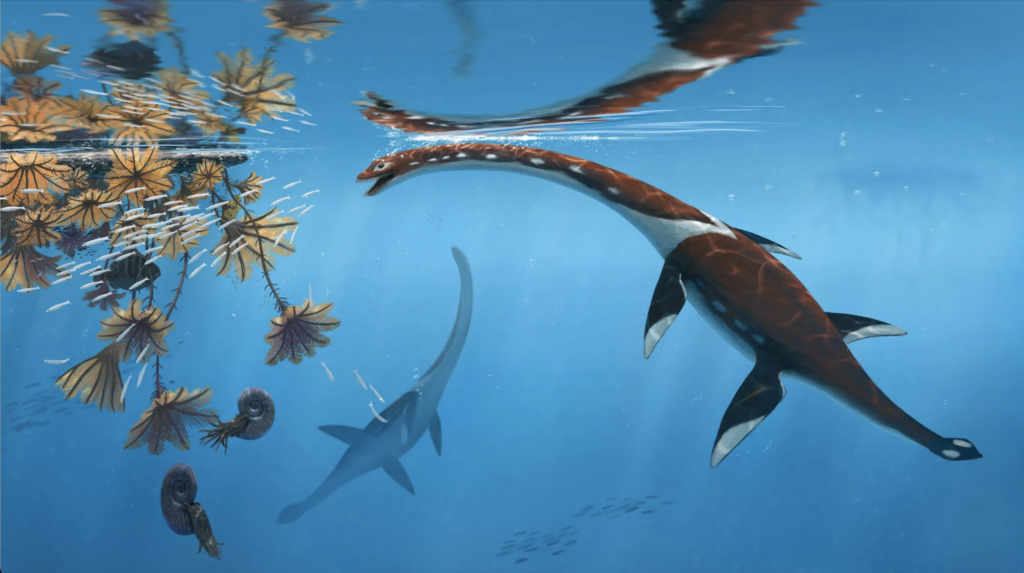A “most remarkable” monster’s fossilized remains from Jurassic Germany is a never-before-seen species, a new study reports.
The marine reptile, which swam in prehistoric oceans about 183 million years ago, has been given the name Plesionectes longicollum, which translates to “long-necked near-swimmer.”
P. longicollum is a type of plesiosauroid, an extinct group of long-necked, carnivorous marine reptiles that swam in Earth’s oceans during the time when dinosaurs dominated terrestrial environments. This specimen lived during the early Toarcian age (183 million to 174 million years ago) during the Early Jurassic.
The fossilized specimen is about 10 feet (3 meters) long, similar to the length of an alligator, with its neck accounting for slightly less than half of its total span.
The nearly-complete skeleton of the animal contained remnants of fossilized soft tissue and bone, which enabled scientists to determine that P. longicollum is indeed a newly-discovered species — a conclusion past studies were hesitant to make.
The reptile’s bones were originally excavated in 1978 from a quarry in Germany, part of the Posidonia Shale formation, which is known for its “exquisitely preserved fossils,” according to the study. “This specimen has been in collections for decades, but previous studies never fully explored its distinctive anatomy,” study lead author Sven Sachs, a vertebrate paleontologist at the Natural History Museum of Bielefeld in Germany, said in a statement from the museum.
Related: Oldest tadpole on record was a Jurassic giant
The findings were published in the journal PeerJ on Aug. 4.

“Our detailed examination revealed an unusual combination of skeletal features that clearly distinguish it from all previously known plesiosaurs,” Sachs said. The work demonstrated that the Posidonia Shale beds contained a higher degree of reptile diversity than previously thought.
The new specimen is the oldest known plesiosaur from the town Holzmaden in southwest Germany, according to the statement. The animal was not yet an adult when it died, but based on its anatomy, researchers were able to classify it into a new genus and species.
Five other almost complete Plesionectes skeletons have been identified at the Posidonia Shale and include examples of all three major plesiosaur lineages.
“This discovery adds another piece to the puzzle of marine ecosystem evolution during a critical time in Earth’s history,” study co-author Daniel Madzia, a paleobiologist at the Polish Academy of Sciences, said in the statement. The period when P. longicollum lived “was marked by significant environmental changes, including a major oceanic anoxic event that affected marine life worldwide,” he said. The event, which depleted oxygen and spiked acidification in the water, led to a severe loss of marine biodiversity, including an extinction event killing around 5% of global families on land and in the sea.
This fossil is permanently housed at the Stuttgart State Museum of Natural History in Germany.
